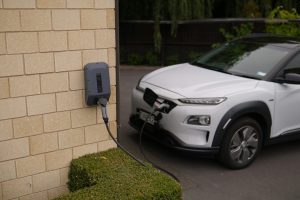The Trump Effect: What Happens to EV Tax Credits in 2025?
In 2017, President Donald Trump signed into law a sweeping tax reform bill that among many changes, phased out the federal tax credits for electric vehicles (EVs). This policy, known as the Trump Effect, sparked immediate concern and speculation about the future of EVs in the United States. As we approach the year 2025, when the full impact of this legislation will be realized, the question remains: what will happen to EV tax credits in 2025? Let’s explore this complex issue and its potential implications for the EV market and consumers.
The History and Purpose of EV Tax Credits
Since the early 1990s, the US government has offered tax credits to incentivize the purchase of EVs and other alternative fuel vehicles. These credits, typically ranging from $2,500 to $7,500, are designed to offset the higher upfront costs of EVs and make them more accessible to consumers. The goal of these credits is not only to reduce the environmental impact of transportation, but also to drive innovation and investment in the EV industry.
The Trump Effect on EV Tax Credits
The Tax Cuts and Jobs Act of 2017, signed by President Trump, has brought significant changes to the federal tax code. One of these changes includes phasing out the federal tax credits for EVs. Under this policy, EV manufacturers are limited to a maximum of 200,000 EVs sold before the credits are reduced. Once this threshold is reached, the credits will be gradually phased out over the course of one year.
This has been a significant blow to the EV industry, as many manufacturers have already reached or are close to reaching the limit. For example, Tesla hit the 200,000 mark in July 2018, followed by GM in April 2020. This means that these two major players in the EV market will no longer be eligible for federal tax credits by 2025, which could have a ripple effect on the overall demand for EVs.
The Impact on EV Sales and the Industry
As the EV market continues to grow, the imminent phase out of tax credits could have a negative impact on sales. Without the financial incentive, consumers may be less likely to purchase an EV, especially as the prices of traditional gas-powered vehicles continue to decrease. This could result in a slowdown in the EV market, stalling the progress towards a more sustainable transportation system.
Furthermore, the Trump Effect may also have a ripple effect on the EV industry as a whole. With the lack of financial incentives, EV manufacturers may face challenges in staying competitive and attracting customers. This could result in a slowdown in research and development, as well as reduced investments in new technology, which could hinder the progress of the industry.
The Future of EVs in 2025 and Beyond
While the phase out of EV tax credits may seem like a major setback for the industry, there is still hope for the future of EVs in the US. As we approach 2025, it is important to remember that federal tax credits are not the only factor driving the growth of EVs. State and local incentives, as well as a growing demand for environmentally-friendly vehicles, will continue to support the market.
Moreover, the Biden administration has shown strong support for EVs, with plans to invest in charging infrastructure and increase federal incentives for EVs. This could potentially offset the loss of federal tax credits and even encourage more consumers to make the switch to EVs.
In Conclusion
The Trump Effect has undoubtedly had an impact on the future of EVs in the US. The phase out of federal tax credits could slow down the growth of the EV market and pose challenges for the industry. However, with continued efforts from both the government and the private sector, there is still hope for the future of EVs in 2025 and beyond. As the demand for sustainable transportation increases, the EV industry will continue to evolve and innovate, creating a cleaner and more sustainable future for us all.









